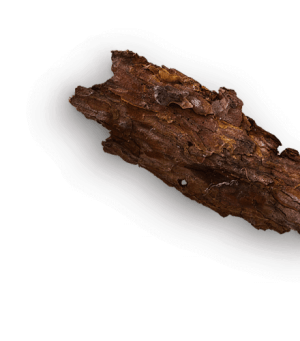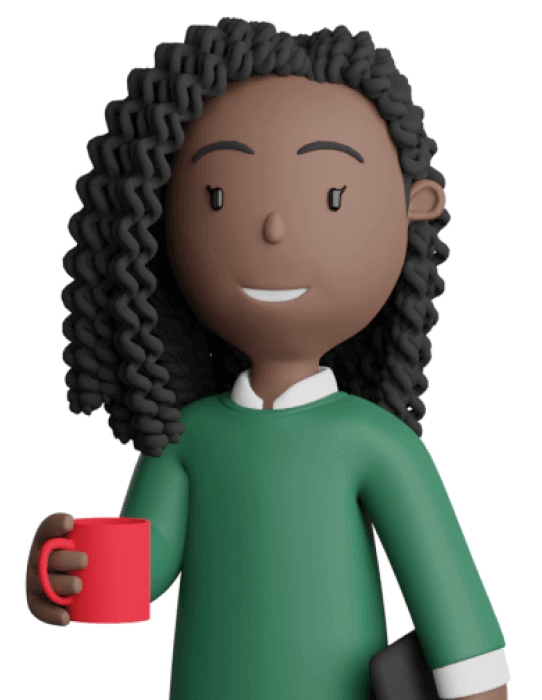Phases of the moon
Learn about the cultural significance of Lunar New Year and its relation to the moon with a hands-on STEAM activity.

Overview
Learn about Lunar New Year through phases of the moon with storytelling and art.
Instructions
What you'll need
- "Lunar New Year 2025" teacher story guide
- "Snake moon phase" colouring sheet, 1 per student
- Colouring pens or markers
Optional
- "Lunar New Year 2025" slide show
- Laptop and projector
Lunar New Year stories
- Begin by asking students what they know about Lunar New Year. Ask about how some students celebrate with their family.
- Begin the discussion by sharing with students the various events celebrated in B.C. Give examples of Diwali/Deepavali, Ramadan, National Indigenous Peoples Day, and Christmas.
- Read the all or some of the stories found in the "Lunar New Year 2025" teacher story guide. Optional: Pull up the "Lunar New Year 2025" slideshow for visual reference.
- Ms. Qiang’s story about how she celebrates Chinese Lunar New Year with her family in Yang Yi (阳义), a small town in Eastern China.
- Ms. Poh’s story about how she celebrates Chinese Lunar New Year with her family in Malaysia
- Introduce students to Elder Larry Grant’s story and on his Musqueam Indigenous heritage with his Chinese roots
- After, ask students the following questions:
- What did you like most about the story?
- What are some foods that are special to them and their family during a celebration?
- What are some interesting parts in the story you found surprising?
- Introduce Lunar New Year and its celebrations and how it follows the phases of the moon and reference to the Chinese Zodiac, specifically the Wood Snake for 2025.
- Lunar New Year is tied to the phases of the moon as it marks the first new moon of the lunar calendar or lunisolar calendar year. The lunisolar calendar combines the cycles of both the moon and the sun.
- The celebration begins on the date of the second new moon after the winter solstice, typically occurring in late December.
- This connection reflects the traditional Chinese method of timekeeping, where months are based on the lunar cycle, and years align with both lunar and solar cycles.
- Briefly talk about how the moon affects tides in the ocean. The moon’s rotation around the earth exerts a gravitational pull and helps create tides. Share briefly about how the moon helps generate tidal energy, a source of renewable energy.
- How does the moon affect earth? The gravitational pull of the Moon significantly influences Earth's tides. During a full moon and a new moon, when the Sun, Earth, and Moon are aligned, the gravitational forces combine, leading to higher high tides known as "spring tides." Conversely, during the first and third quarters of the moon, when the Sun and Moon are at right angles relative to the Earth, the gravitational forces partially cancel out, resulting in lower high tides known as "neap tides".
- How does tidal movement become a form of energy? The tidal movement generates kinetic energy that can be harnessed for renewable energy. Tidal energy systems, often located in areas with strong tidal currents, use the ebb and flow of tides to turn turbines and generate electricity. This renewable energy source provides a predictable and consistent power supply, making it a promising component of the global effort to transition to sustainable energy.
Snake moon phase colouring activity
- Distribute the "Snake moon phase" colouring sheet (1 per student).
- First explain to students that the moon does not have its own light and instead it's reflected light from the sun.
- Introduce moon vocabulary to the students and start with basic terms like “full moon”, “half moon” and “crescent moon”. Introduce the other phases of the moon and ask the students if they have seen different phases of the moon in the night sky.
- What are lunar phases? Lunar phases refer to the changing appearances of the Moon as observed from Earth due to its position relative to the Earth and the Sun. The main lunar phases include:
New moon The Moon is not visible from Earth. Waxing crescent A small, illuminated crescent is visible First quarter Half of the Moon is illuminated, resembling a half-moon. Waxing gibbous More than half is illuminated, and it continues to grow. Full moon The entire side facing Earth is illuminated. Waning gibbous More than half is still illuminated, but it decreases. Last quarter Half of the Moon is illuminated, resembling another half-moon. Waning crescent A small, illuminated crescent is visible, shrinking each day until the next new moon. - These phases are a result of the Moon's orbit around the Earth and the changing angles of sunlight falling on its surface.
- What are lunar phases? Lunar phases refer to the changing appearances of the Moon as observed from Earth due to its position relative to the Earth and the Sun. The main lunar phases include:
- Alternatively, you can show the one of the two videos:
- "Why the moon change its shape" video (Source: Peekaboo Kidz, 5:59)
- "Phases of the moon" video (Source: MooMoo Math and Science, 2:56)
- On the "Snake moon phase" colouring sheet, explain that each segment has a different moon phase that has a corresponding colour in the key on the colouring sheet.
- Ask students to colour in the segments according to its corresponding colour.
- Option: instead of colouring pencils or markers, students can also glue small pieces of coloured paper to the sections.
Curriculum Fit
Kindergarten - Grade 3
Learning objectives
- Cultural understanding: Students will develop an awareness and understanding of the cultural significance of Lunar New Year, exploring traditions, customs, and celebrations. This fosters appreciation for diversity and cultural heritage.
- Calendar awareness: Learn about the lunar calendar and how Lunar New Year is determined by the moon phases. Understand the concept of a lunar year as opposed to the solar calendar.
- Moon phases: Identifying Moon Phases: Students will recognize and differentiate between the various phases of the moon. This includes understanding concepts like new moon, crescent, gibbous, and full moon. Students will also learn about connections to Turtle Island and moon phases from an Indigenous perspective.
- Discussion and expression: Lead class discussions to allow students to express their understanding of lunar phases, fostering communication skills and critical thinking.
Curriculum fit
Learning about the significance of Lunar New Year in different cultures and how our connection to land, sea, and sky connects the personal and social throughout different communities in British Columbia.
Core Competencies
Personal and Social, Thinking
- Understanding relationships and cultural contexts.
- Building relationships.
- Valuing Diversity
- Creating and Innovating
Social Studies
Big ideas
- Stories and traditions about ourselves and our families reflect who we are and where we are from.
- Healthy communities recognize and respect the diversity of individuals and care for the local environment.
- Canada is made up of many diverse regions and communities.
- Learning about Indigenous peoples nurtures multicultural awareness and respect for diversity.
- People from diverse cultures and societies share some common experiences and aspects of life.
Curricular competencies
- Use Social Studies inquiry processes and skills to ask questions; gather, interpret, and analyze ideas; and communicate findings and decisions
- Contribute to a class collection of information on a common topic.
- Collect information from personal experiences, oral sources, and visual representations.
- Explain the significance of personal or local events, objects, people, or places
- Research the history of a significant event or person in the history of your community.
- Explore different perspectives on people, places, issues, or events in their lives (perspective)
- Explain why people’s beliefs, values, worldviews, experiences, and roles give them different perspectives on people, places, issues, or events
Science
Big ideas
- Plants and animals have observable features
- Observable patterns and cycles occur in the local sky and landscape.
- Wind, water, and ice change the shape of the land.
Curricular competencies
- Demonstrate curiosity and a sense of wonder about the world
- Recognize First Peoples stories (including oral and written narratives), songs, and art, as ways to share knowledge
- Identify simple patterns and connections
- Make predictions based on prior knowledge
- Identify First Peoples perspectives and knowledge as sources of information
Assessments
- Assess students’ cultural understanding of Lunar New Year and the connections between Indigenous and Chinese Communities in B.C.
- Assess students’ understanding of the phases of the moon based on correct identification for some phases.
- Assess students’ understanding of the significance of Lunar New Year through discussions and questions.
Teaching Notes
What is Lunar New Year?
Lunar New Year, also known as the Chinese New Year or the Spring Festival, is a traditional festival celebrated by various East Asian cultures. Its origins date back thousands of years and are steeped in legends. One such legend involves the mythical beast Nian (traditional Chinese: 年獸; simplified Chinese: 年兽, pinyin: nián shòu), which would attack villages at the start of the new year. To ward off Nian, people began using loud noises like firecrackers, bright lights, and the color red – traditions that continue in modern celebrations.
You can click on this link for video story of Nian (Source: The Little Genius Workshop).
The festival is based on the lunar calendar, with the date varying each year. It marks the end of winter and the beginning of spring, symbolizing renewal and the start of a new agricultural cycle. Traditional customs include family reunions, feasts, dragon and lion dances, fireworks, and the giving of red envelopes (hongbao) containing money for good luck.
Refer to this video to learn more about Lunar New Year (Source: Scholastic).
How do different ethnic cultures celebrate Lunar New Year?
- Chinese Lunar New Year: Celebrated with family reunions, feasts, dragon and lion dances, fireworks, and red envelope (hongbao) exchanges for good luck.
- Korean Seollal: Emphasizes ancestral rituals, with families paying respects to ancestors through ceremonies, traditional foods, and games.
- Vietnamese Tết: Celebrated over three days, featuring family gatherings, special foods, and the custom of giving and receiving li xi (red envelopes) for good luck.
- Malaysian and Singaporean celebrations: Festive activities include family feasts, cultural performances, dragon dances, and flower markets.
- Japanese celebration: Japanese communities with Chinese cultural influence may observe Lunar New Year with customs like lion dances and festive meals.
- Thai New Year (Songkran): Celebrated in mid-April, Songkran involves water fights, cleaning rituals, and paying respects to elders, symbolizing purification and renewal.
- Filipino-Chinese celebration: Blends Filipino and Chinese traditions, including dragon dances, family feasts, and red decorations.
When does Lunar New Year take place?
Lunar New Year, commonly known as Chinese New Year, falls on the second new moon after the winter solstice. The exact date varies each year, typically occurring between January 21 and February 20 on the Gregorian calendar. In 2023, for example, Lunar New Year was celebrated on January 22. In 2024, Lunar New Year is celebrated on February 10th and marks the beginning of the Year of the Dragon in the Chinese Zodiac. You can click on this link to learn about the story of the Zodiac animals (Source: Panda Express TV).
What do families do for Lunar New Year celebrations?
- Cleaning and decorating
- Family reunion dinner or feast
- Wearing red: (red is a prominent color symbolizing luck and prosperity)
- Offering to ancestors
- Firecrackers and lion dances
Who is Elder Larry Grant?
Elder Larry Grant is a Musqueam and Chinese-Canadian elder known for his significant contributions to the promotion of the hən̓q̓əmin̓əm̓ language and its cultural value. Born and raised in Musqueam traditional territory, he has served as an educator, adjunct professor, mechanic, and longshoreman. After retiring, Grant dedicated his life to preserving and sharing the knowledge of the hən̓q̓əmin̓əm̓ language, making a substantial impact on cultural awareness and heritage preservation.
As the Elder-in-Residence at the UBC First Nations House of Learning and an adjunct professor with the UBC First Nations Endangered Language Program, Larry Grant continues to play a crucial role in fostering cultural understanding and linguistic revitalization.
His mixed Chinese and Musqueam ancestry, along with his upbringing in Musqueam traditional territory, reflects his unique background and positions him as a notable figure in the preservation and celebration of Indigenous language and culture in British Columbia.
“All Our Father's Relations" is a documentary that beautifully unfolds the unique story of the Grant siblings, connecting Musqueam Indigenous heritage with their Chinese roots. This engaging tale explores personal history and highlights the broader connections between Chinese and Indigenous communities in British Columbia. It also shares how Indigenous and Chinese communities shared history of discrimination and racism in Canada.
What is the connection between Indigenous and Chinese communities in British Columbia?
- The relationship between First Nations people and Chinese immigrants in British Columbia has a long history, dating back to before B.C. joined Confederation.
- Chinese and Indigenous populations played significant roles in British Columbia, as depicted in the short film "1788", exploring their historical relations in the region.
- Shared history tours aim to educate Canadians about the intertwined history of Indigenous and Chinese communities in British Columbia, highlighting the province's development.
- Chinese workers arrived in Nuu-chah-nulth territory in 1788 as part of Captain John Meares' expedition, and were forced to help build the non-Indigenous settlement of the region.
- Early Chinese immigrants and First Nations people developed relationships in British Columbia from 1858 to 1947, forming connections that are often overlooked in history.
How do lunar phases relate to Indigenous communities?
The moon phases hold cultural and spiritual significance for different Indigenous groups, such as the Ininew (Cree), Saanich, and Gitxsan, and have unique perspectives and teachings related to the Moon. According to Wilfred Buck, Researcher and Knowledge Keeper from the Opaskwayak Cree Nation mentions that the Moon symbolizes the passage of time. Climate, animals, plants, and temperatures follow the pattern and cycle of the moon. (Reference: Canadian Space Agency)
- Ininew (Cree) Perspective: Indigenous stories about the Moon from an Ininew perspective contribute to a unique cultural understanding of the Moon within their community.
- Saanich Perspective: The Saanich people follow a calendar based on the 13 moons, connecting their year to the cycles of the moon and the natural environment. Click on the link for more information on Saanich Year and lunar cycles.
- Gitxsan Perspective: The Gitxsan people incorporate predictable cycles of day and night, tides, moon phases, seasons, and species growth into their cultural practices and understanding of resilience. They recognize 13 moons or months and are divided into the four seasons. Lear more about Gitxsan Moons from Canadian Climate Institute.






